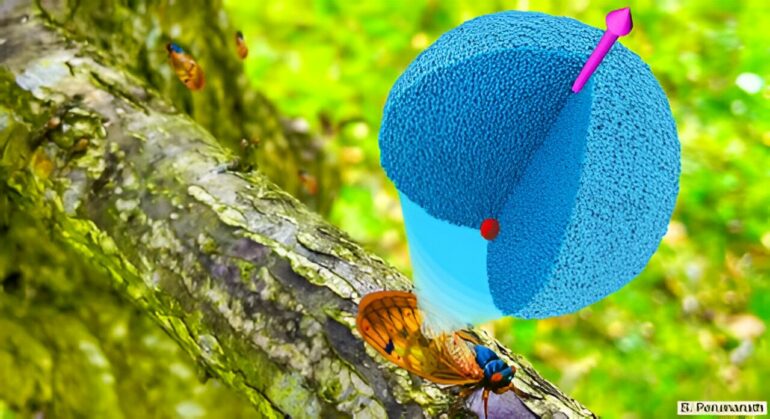A type of large insect known as a cicada is able to keep its wings clean of dust and dirt through a remarkable process that could be applied within modern technology.
The texture of the cicada wing is unusually repellent to water; this is known as being “super hydrophobic.” This means that morning dew is able to collect on the wing surface, forming small water droplets. As the droplets combine with each other, they collect dust particles and microorganisms—taking them along as the water drops off the wings.
This is due to both the water-repelling nature of the wings and their special wax-coated cones, which help the droplets move across the surface. This stops the droplets collecting in one spot and simply staying there—such as when a cup of coffee spills on a table.
This fascinating process could provide a solution to the seemingly never-ending task of cleaning your windshield—inspiring the scientists at the Universities of Warwick and Edinburgh to investigate this type of “natural engineering.” The team is excited about the prospect of potentially self-cleaning skyscraper windows, solar panels, camera lenses and more.
A super water-repellent surface could also prevent frost from forming on windshields in the winter.
The team used mathematical models and powerful computer simulations to investigate the wing structure in their study published in the journal Nano Letters.
Dr. Sreehari Perumanath, of the Mathematics Institute, at the University of Warwick, said, “We used large-scale molecular simulations run on a supercomputer to identify the factors influencing self-cleaning of natural, biological surfaces. With the new insights from this work, we are now able to predict when and how contaminants of varying size are removed by liquids, such as water or oil, from surfaces. In the future, such nature-inspired self-cleaning surfaces could replace windowpanes in our homes and body panels on cars and other vehicles that currently require us to painstakingly clean them.
“Our research also indicates how we can economically position nanoparticles on engineering surfaces using droplets which will benefit emerging applications—including biosensors and enhanced energy transfer in solar panels. However, such bespoke applications of droplet-enabled particle transport require further investigations.”
Dr. Matthew Borg, University of Edinburgh, added, “This research reveals the critical parameters required for contaminants to be removed effectively from surfaces and opens up new avenues for careful experimentation and design of nature-inspired self-cleaning surfaces.”
More information:
Sreehari Perumanath et al, Contaminant Removal from Nature’s Self-Cleaning Surfaces, Nano Letters (2023). DOI: 10.1021/acs.nanolett.3c00257
Provided by
University of Warwick
Citation:
Wing-screen wipers: How self-cleaning cicadas could help us have cleaner cars (2023, September 28)



